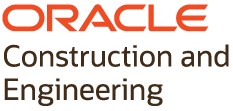
It is no secret among construction leaders that design-build focused organisations and projects are increasing exponentially.
In fact, design-build is expected to account for 44% of construction spending by 2021, according to the Design-Build Institute of America (DBIA). As a result, competition is ramping up for contractors to win owners’ trust and preference for project selection.
Owners are seeking more reliable ways to evaluate competing contractors’ credentials and make the best decisions based on time and cost considerations.
Ultimately, they must have the confidence that their contractors have the tools and experience to help them successfully deliver on a design-build project.
The DBIA reports that design-build strategies can deliver projects up to 102% faster, with 3.8% less cost growth than traditional design-bid-build models.
With the old, linear design-bid-build model, owners had to complete design, then go through a lengthy bid process before finally beginning construction. But with design-build, there is a shared approach that allows all aspects of a project to come together at once, driving new cost and time-saving efficiencies.
For example, in the traditional design-bid-build model, engineers design independently of how a project is going to be built. However, by completing design during construction, with constant collaboration between engineers and builders, recommendations can be made that may save time and money.
Contractors must assure owners they not only have the experience managing design-build projects, but that they also use tools optimised to ensure success across the entire build team.
To do this, they must demonstrate they have three essential components to enable a successful design-build project management strategy: collaboration, transparency, and security/access control.
Collaboration begins with access
With construction beginning before design is complete, design-build strategies emphasise the need for all organisations on a project to truly embrace collaboration. General contractors must ensure they have the tools to support the optimised information access required to collaborate across an entire design-build project.
Document sharing, scheduling, risk management, and other critical functionality must be built-in to ensure everyone has the information they need, whenever they need it.
As is the case with all collaboration-driven projects, cloud storage solutions and data visualisation tools will play a critical role in enabling the real-time sharing of actionable data across design-build projects.
Transparency keeps owners informed
The project management tools must always provide all parties with a clear understanding of the decision-making matrix to ensure there are no expensive delays or unacceptable surprises for owners.
Reporting frameworks and frequency, agreed-upon employer information requirements (EIRs), and project standardisation and governance are all indispensable tools that provide clear, unalterable audit trails on the information status of project-related decisions and tasks.
This improved transparency between the build team and the owner ensures that everyone has a better understanding of all issues before they develop into project-altering problems.
Security and access control builds trust
It’s critical that all information on a project is captured in a single platform, and where all stakeholders have control over their data, and no stakeholder has an advantage over another.
Project information must be housed in a secure environment and protected from threats through rigorous security protocols to ensure that all stakeholders know their data is safeguarded.
For example, designers typically do not want to share changes with builders until they know the design is final, ensuring complete quality control over the information being shared.
The same is true for the request for information (RFI) process – stakeholders must feel confident that only specific contractors have access to the data directly involved in the project.
Closing thought
While all these steps are essential, perhaps the greatest challenge to a design-build project is getting owners and other project stakeholders on board.
To do that, it is the responsibility of the build team to illustrate that their design-build strategy has a proven track record, measuring and projecting progress in real-time through regular reporting and benchmark-setting tools.
Only then will owners and contractors have the confidence they need to move forward with their own design-build initiatives.
Oracle Construction and Engineering, the global leader in construction management software and project portfolio management solutions, helps you connect your teams, processes, and data across the project and asset lifecycle. It helps to drive efficiency and control in project delivery with proven solutions for project controls, construction scheduling, portfolio management, BIM/CDE, construction payment management, and more.


